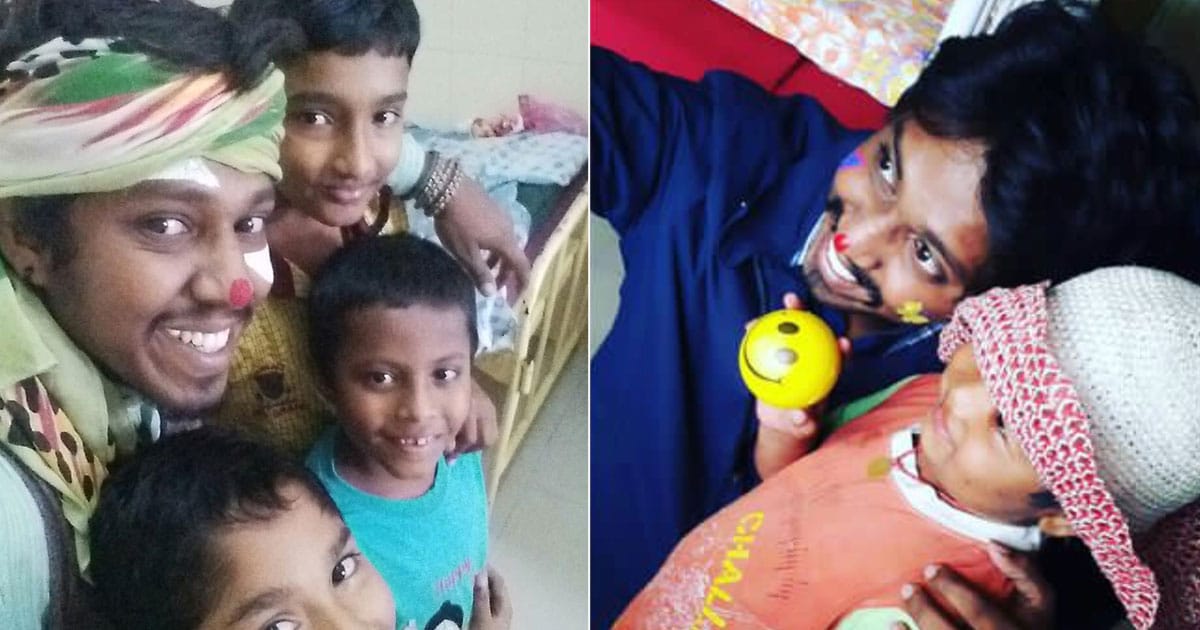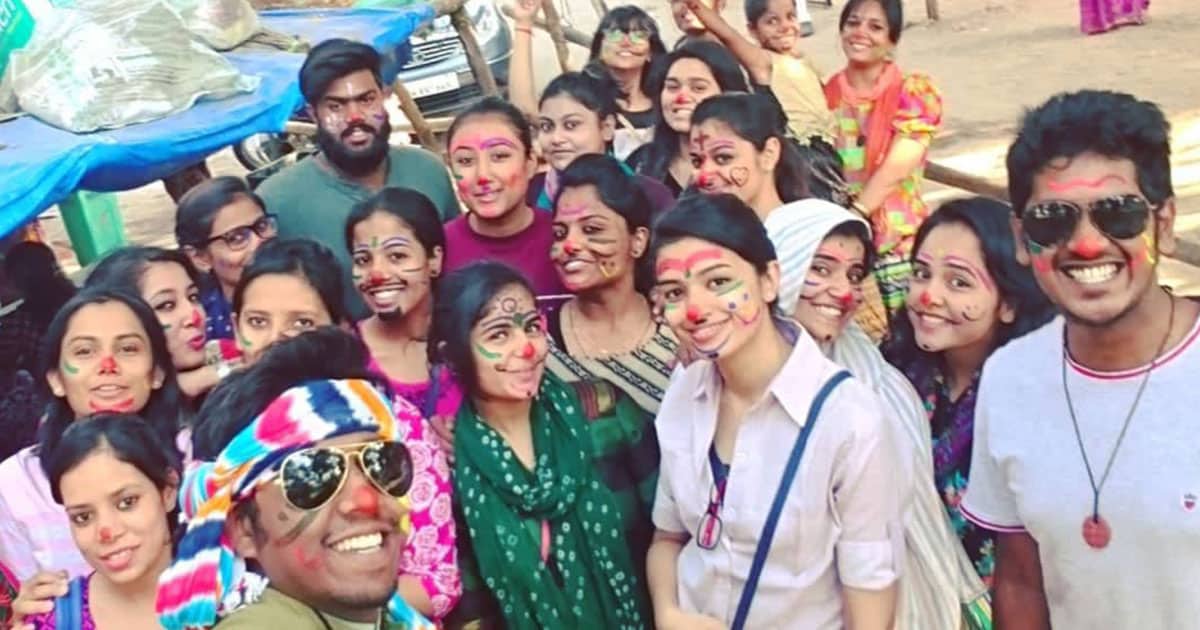‘CLOWNS’. We usually go back to our childhood when we hear this word. Colorful hair, a funny nose, and weird face paintings are some memories we have from childhood. But did you know that clowns can be the best healers?
Harish Bhuvan began his journey with Compassionate Clowns seven years ago with his friend. It all started when Harish’s closest friend was diagnosed with cancer and was severely ill. This made it difficult for Harish to carry himself in a normal state as he was highly attached to his friend. Harish was soon diagnosed as a clinically depressed individual.

While Harish was coping and going through this phase, he once saw a clown on the streets. The clown was making people laugh as they passed by. This was the moment Harish thought, “Why can’t we clown?”. He instantly shared it with a friend, and both decided to go ahead with clowning.
Sharing with LifeBeyondNumbers about his first experience, Harish says,
“We simply entered the hospital with funny clothing and painted faces. We started making funny faces, fell intentionally, and did all kinds of stupid things. There was utter silence initially and after a few minutes, a small boy started smiling. Slowly, it became laughter and everybody got involved.”
This is how two of them began the journey of clowning, and today more than 5000 volunteers have become a part of Compassionate Clowns, based in Bangalore. Not only in India but many therapeutic clowns all over the globe have been inspired by them.
Art of clowning
Making someone laugh is not an easy job; it needs a thorough understanding and authenticity within an individual. We asked Harish about how he prepared himself to become a clown.
“In India, there is no such course that teaches clowning. There are such courses outside India that teach clowning. However, they were extremely costly to be pursued. So, I equipped myself with clowning skills through Youtube videos and practiced in front of my mother. She was my dedicated audience in the beginning.”
It’s always about having an intention to make the other person happy by connecting with them. Clowning is more about creating a conscious and authentic connection with an individual to touch their hearts.
Also, read: Meet The Singer From Assam Who Sings For Corona Patients Over Phone
What does a normal Clowning session look like?
They have worked with children, adolescents, adults, old-age homes, and also with patients in palliative care. The clowning sessions are conducted on the weekends in the hospitals, and every weekend, different volunteers join this activity. Thus, there are a few rules and an order in which the activities are conducted.

The energy of a hospital is different. It is filled with suffering, grief, and pain. To create humor and fun in the space of such heavy energy is a challenge. For that, they have a ritual before beginning the clowning session.
“We normally gather at around 3’o clock and have an ice-breaking session wherein volunteers interact with each other. Thereafter, we have a gratitude circle wherein everybody shares one thing they are thankful for. Then we have a set of rules that we inform and then in the form of a train we instantly enter the hospital with full energy and joy.”
They have rules: no toxic humor, do not offer any edibles, do not get into the details of the diseases of patients, and always use yourself as a medium to connect with the patients.
After one and a half hours of clowning, they express silent gratitude to the hospital, volunteers, patients, parents, and authorities for making it possible. After that, they have a reflection circle wherein all the volunteers deeply share their intimate experiences of the clowning session.
Also, read: This Woman Is Willing To Offer Her Breast Milk To Newborns Whose Moms Are Covid Positive
In the end, it’s all worth it…
They come across many stories that deeply touch them and make the whole clowning experience worth it. However, Harish shares one of the most memorable stories with LifeBeyondNumbers.
A kid was in NICU and was suffering from malnutrition. His mother asked the clowns to come and talk with him. Clowns usually are not allowed in NICU. After seeking permission and taking the necessary safety, Harish went in. The first time he went, he took a slinky with him to entertain the kid. While leaving, the kid held on to the toy and requested Harish to keep it there only.
The kid was not able to speak much due to his condition. The following week, when they came, he was joyfully showing his toy to everyone. In the third week, he had started taking liquid. In the fourth week, he had started talking and had healed gradually. The doctors said that this treatment typically takes six months to leave an impact. However, he got hungry just because he started to become a little active. As he ate, the healing happened quickly.
“Every time we see such an incident, we get an affirmation that we are on the right path and we experience the purpose for which we are doing this.”
Clowning has the power to bring changes on many levels in an individual’s life. It is said that “Doctors take care of the body, and clowns take care of the soul.“

